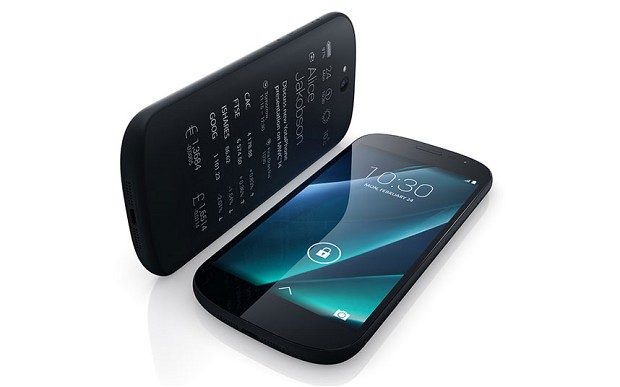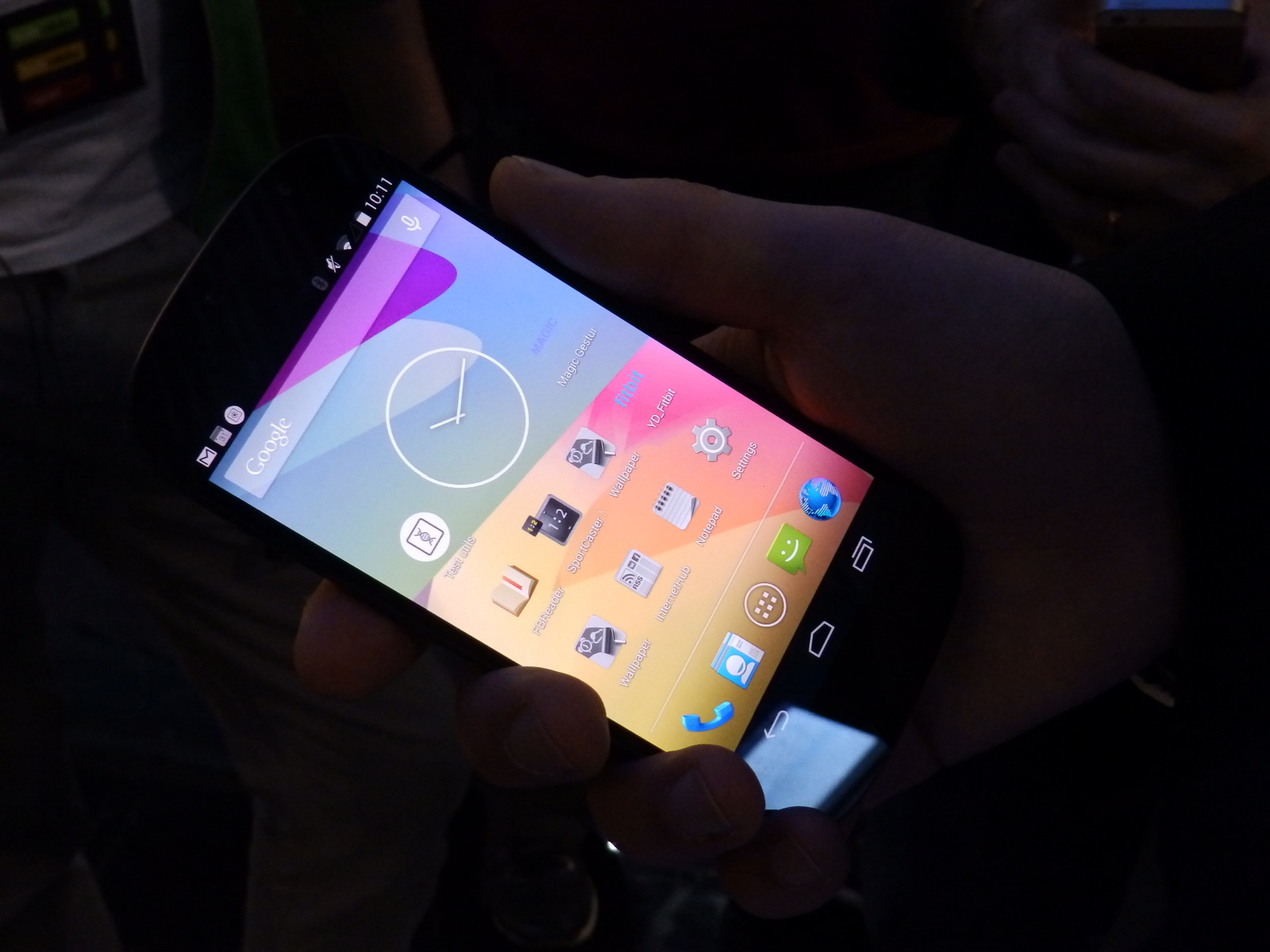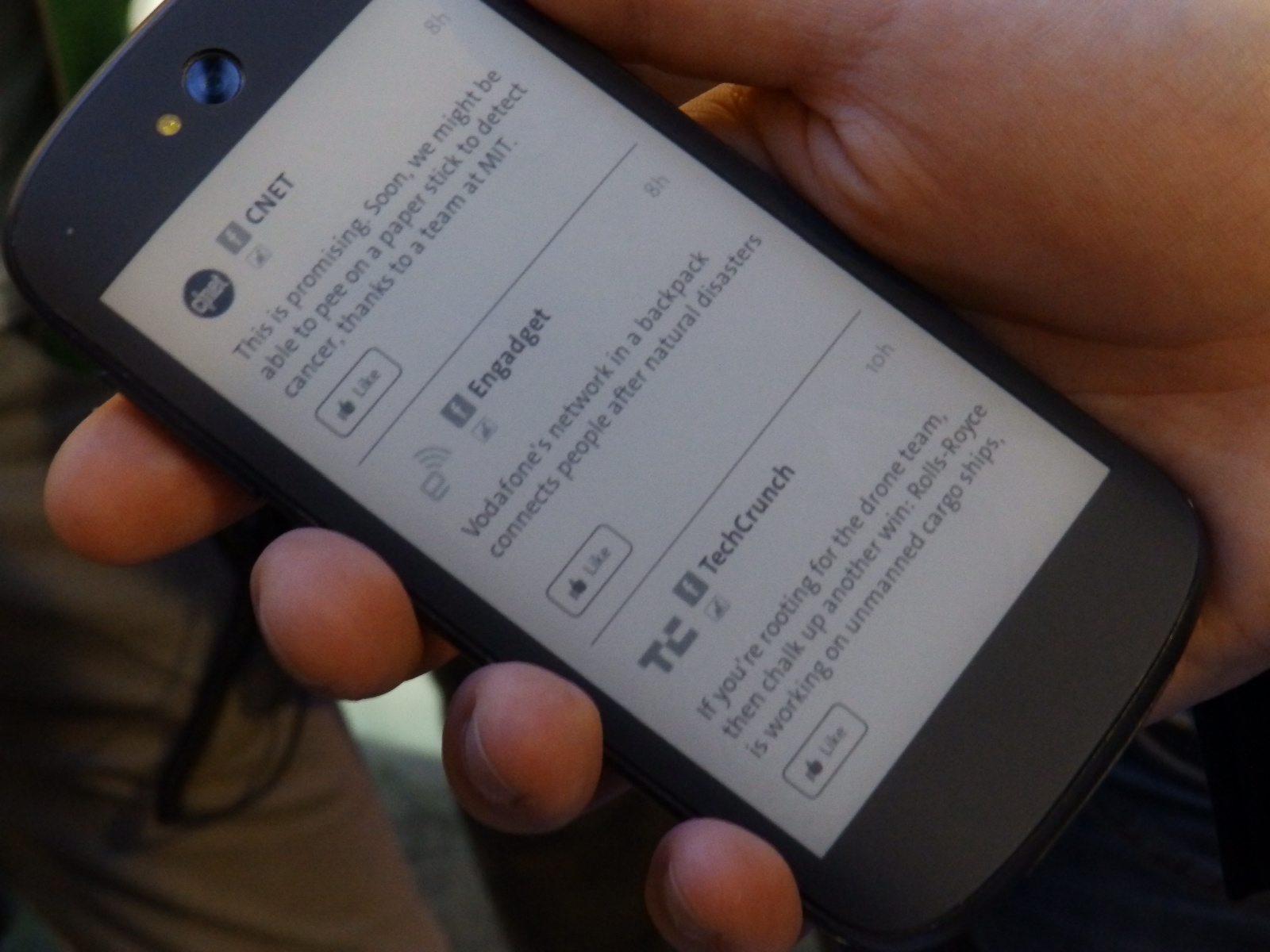Second Generation YotaPhone Fixes Some of the Kinks
Yota Devices has been busy for the last couple of months. The company already has a new version of the phone it announced in December.
One of the most interesting devices on the show floor at MWC was the second generation YotaPhone. This device is different from any other smartphone in that it has two displays, one in the back and one in the front. The second generation YotaPhone brings updated specs as well as touch functionality to the rear screen.
This model of YotaPhone comes a lot closer to the specs we're used to seeing on current generation flagship phones. It has a 5-inch AMOLED display, a quad-core Snapdragon 800 CPU from Qualcomm, 2 GB of RAM, and 32 GB of storage. The camera on the back is an 8-megapixel lens, while the front-facing camera is 2-megapixels. Yota has moved the camera from its old location at the bottom left corner of the device's back to a more traditional location at the top of the rear of the phone. We love this change, as the old location meant it was really easy to accidentally cover the camera or get a stray finger in your photos. We're all for innovation, but sometimes standard is standard because that's what works best. Yota Devices has also upgraded the design of the phone. Gone is the square design of YotaPhone 1. This has been replaced with a curvy phone that looks a lot like the Nexus S. As with the original YotaPhone, the YotaPhone 2 is more or less stock Android. There's very little in the way of additional software on the device.
One of the biggest changes, aside from the internal specs, is that the rear display is now also touch sensitive. On the previous generation of YotaPhone, the back was just a regular e-paper display with a touch-sensitive strip underneath that responded to set gestures. Now, both sides of the phone feature touchscreen displays. The back display is always on and can be used to display news feeds from RSS, tweets, updates from social networks, and phone notifications. You can also read books and newspapers without completely killing your battery. In addition, Smart Power Mode lets you turn off the front screen if you're low on power and use the rear screen for important stuff that just can't wait (like emails and texts). The rear display can also display data from your fitness tracker, sports scores, and other real-time information while you're not actively interacting with the device.
The addition of a touch-sensitive e-paper display means we no longer have that strip along the bottom to contend with. While playing around with the first generation YotaPhone, we found the strip to be a little bit flaky in its response to the set gestures. We had the same problem with the front of the device. Unlike other Android phones that have traditional soft keys for 'back,' 'home,' and currently running apps, the YotaPhone 1 used unique gestures along the bottom of the device. Swipe left to go back, swipe right for home, etc. This is a simple concept, but we found it rather hard to use, with some gestures requiring repeated attempts before they'd register. It's very frustrating to have to spend 10 seconds trying to exit an application. Even a simple visual guide of where to swipe would help a lot, but that would have involved some kind of imprint or marking on the front of the device, which Yota likely didn't want. Thankfully, the company has scrapped this 'feature' for the second generation YotaPhone in favor of the regular Android soft keys we're so used to. It's a lot easier to control the device, and while the front of the device no longer has that same air of sexy mystery, we much prefer knowing our key presses are going to be recognized every time.
So, given that the original YotaPhone was just announced in December, you might be wondering why there's another one so soon. Though we question the merits of announcing a second generation device so soon after your first generation has launched, Yota Device isn't actually going to be selling the YotaPhone 2 for a while, so those who already own the first model can sleep easy knowing they're not outdated just yet. The new YotaPhone is expected to arrive this year, but it won't be until Q4. Something tells us they won't be selling an awful lot of YotaPhones between now and then, given the drastic improvements to design that will come with the second generation.
Check out all our Mobile World Congress 2014 coverage here!
Get Tom's Hardware's best news and in-depth reviews, straight to your inbox.
Follow Jane McEntegart @JaneMcEntegart. Follow us @tomshardware, on Facebook and on Google+.

Jane McEntegart is a writer, editor, and marketing communications professional with 17 years of experience in the technology industry. She has written about a wide range of technology topics, including smartphones, tablets, and game consoles. Her articles have been published in Tom's Guide, Tom's Hardware, MobileSyrup, and Edge Up.
-
Jgriff Hate two screen devices, completely unescessary and cumbersome. The fad needs to fizzle IMO. The Nintendo ds....I blame you. Other than that it's nice.Reply -
vaughn2k There is still space on the side of the phone. I suggest to run on these sides like, stocks update, news headlines, RSS feeds, twitter, or whatever a one liner update could do... ;)But kidding aside, this is cool design though... just a worry not to reak the other glass, whichever side it is...Reply -
zared619 I don't understand the need for two screens on a phone. They are turning phones into AMD processors..."More is better!!!!" Not in this case.P.S. I still think AMD has its place in the processor world, not hating on them.Reply


